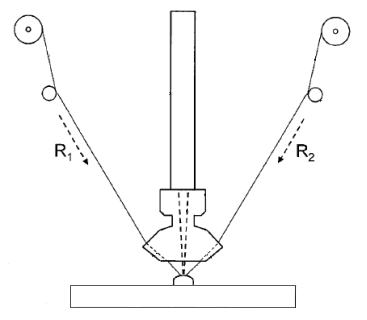Method for Additive Manufacture of Metal Alloys
| 582 - Abstract: |
| The European Space Agency has developed a novel design for producing alloys during an additive manufacture process. It uses a multi-wire feeder method as opposed to the more traditional powder based procedure. This allows for the exact ratio of metals in the alloy to be controlled much more easily and the ratio can be modified throughout the process where necessary. This also reduces the amount of powder wasted, hence increasing the efficiency of the entire process. Licensing agreements are sought. |
Description
The nozzle on a laser deposition machine has been developed to include a multiple wire feed. This allows accurate and precise control of the feed rate, including rapid starting & stopping of the feed, not possible using powder based methods. Laser deposition machines are normally used to manufacture components from a single material but the precise control offered by this design allows for the accurate production of specific composites & alloys. This allows for a reduction in costs through increased efficiency.

Wire is also far more available as a pure metal source than powder, with powder also often having the disadvantage of a high oxygen content. The added efficiency of wire is seen particularly when using rare earth metals as virtually all of the wire is transferred to the component whereas powder may only have an efficiency of about 10-20%.
There are also variants of the nozzle that can incorporate additional powder feeds, cooling channels, and a convex surface to reflect heat back into the melt pool. All of these can be used to add extra functionality depending on the exact application that is being pursued.
A full-scale trial is currently underway to determine the exact figures of efficiency for the nozzle with results expected in the near future.
Innovations and advantages
- Ability to create alloys through an additive manufacture process.
- Increased control of the wire feed.
- Increased efficiency compared to powder based processes.
- Reduced cost due to high efficiency and low waste.
Domain of application
- Additive manufacture is a rapidly emerging market and the advantage of alloy production can be leveraged.
- Development of combinational metallurgy samples
- Rapid prototyping
Once integrated into an additive manufacture process the potential markets are extremely varied. These can range from transport, high temperature containment, magnetics, superconductors, and anywhere else where the exact combination of the alloys is critical and where costs can be reduced.




